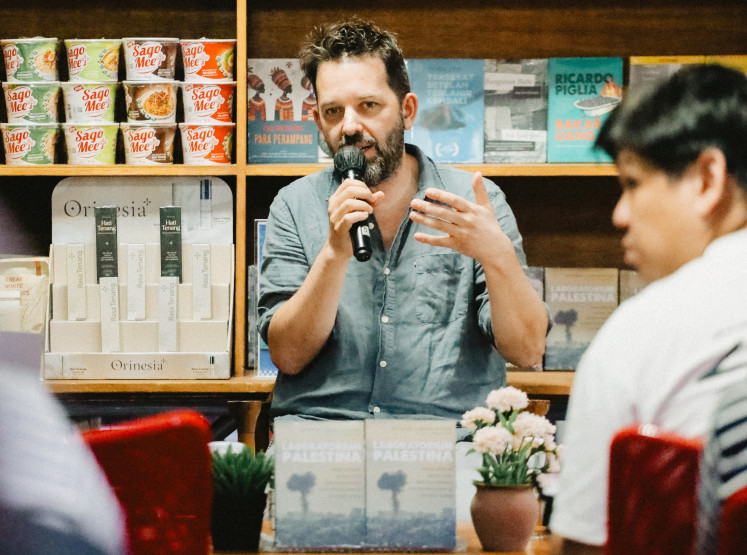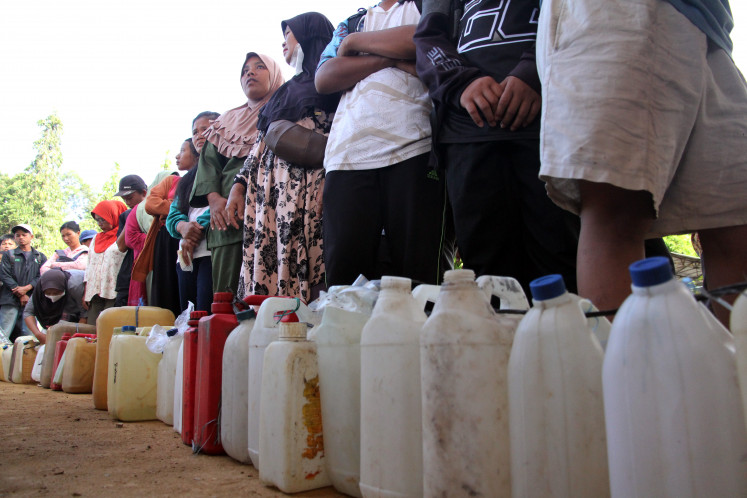Popular Reads
Top Results
Can't find what you're looking for?
View all search resultsPopular Reads
Top Results
Can't find what you're looking for?
View all search resultsTraditional river-preservation ritual lives on in Kulon Progo
In the ancient tradition of the Kembul Sewu Sedulur ceremony, the villagers of Pendoworejo seek to preserve the Gunturan River for future generations.
Change text size
Gift Premium Articles
to Anyone
Rain has not been seen for eight months in Pendoworejo village, Kulon Progo regency, Yogyakarta.
However, the village springs still feed the rocky Gunturan River, which snakes through the Menoreh hills.
The Gunturan River is crucial to the people of Pendoworejo who, mostly farmers and livestock breeders, rely on its steady source of water. Through the Kembul Sewu Sedulur ceremony, an ancient tradition passed down from generation to generation, they strive to preserve the river for future generations.
Read also: River cinema among Bali’s newest tourist attractions
The village of Pendoworejo held the ceremony on Wednesday -- the last Wednesday in the month of Sapar, according to the Javanese calendar. The event was marked by a gathering on the river banks known as bendung kayangan.
Villagers brought dishes from this year’s harvest to be enjoyed together during a kenduri procession (a Javanese ritual of blessing or remembrance).
The village head, Budiman, opened the Kembul Sewu Sedulur ceremony with a reminder about the importance of preserving the river for the residents’ livelihoods. He encouraged them to avoid throwing trash in the river and to refrain from fishing with nets and poison.
"This ceremony expresses our gratitude to God for the blessings of nature. Springs and rivers continue to provide us with clean water despite this very long drought," he said.
After a series of prayers led by the village elders, locals ate alongside tourists.
A sacred dance called the Ngguyang Jaran was performed in the river. Featuring a male dancer holding a bamboo horse among the stones and clear water, the dance honored the village founder, Bei Kayangan.
According to local legend, Bei Kayangan was a horse trainer during the era of the Majapahit kingdom. After the kingdom fell, he moved to the Menoreh hills and resided there. He later built a small reservoir with river stones to control the flow of the Gunturan River. The place where the reservoir used to stand is currently known as Bendung Kayangan.
After hundreds of years, the reservoir has been rebuilt by the local administration. (kes)











